Do you ever wonder why you can feel sore after a massage? Many people have experienced this phenomenon and it can be confusing. In this article, we will explore the mystery of why massage can hurt and provide some insight into why it occurs. We will examine the various theories surrounding why massage can cause soreness and discomfort and look at some of the ways that massage therapists can help to avoid this issue. So, if you’ve ever asked yourself “why does massage hurt”, read on to find out the answer.
Contents
What is Massage?
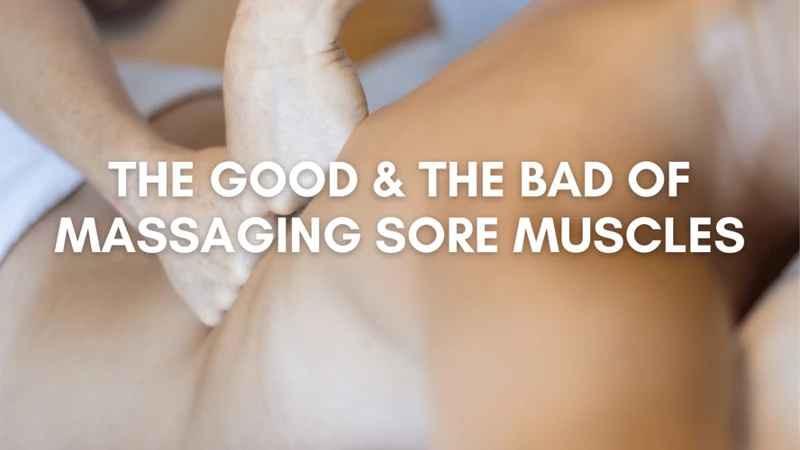
Massage is a form of physical therapy that uses techniques to manipulate the soft tissues in the body to provide relief from pain and stress. It involves pressing, rubbing and manipulating the skin, muscles, tendons, ligaments and other soft tissues. Massage can be used to treat a wide range of conditions and can be tailored to the individual’s needs. Massage can be used to address pain, muscle tension, improve circulation, reduce stress, improve sleep, and improve overall wellbeing.
There are many different types of massage, including Swedish massage, deep tissue massage, sports massage, and trigger point therapy. Each type of massage has its own set of techniques and can be used to target specific areas of the body. Massage therapists use a combination of massage strokes, pressure, and stretching to provide relief from soreness and pain.
When getting a massage, it is not uncommon to experience some soreness afterwards. This can be due to the techniques used, such as deep tissue work, which can cause discomfort when the muscles are manipulated. It is also possible to experience soreness due to the release of toxins or lactic acid buildup in the muscles. Another reason why you may experience soreness after a massage is because the massage therapist works too deep, which can cause microscopic tears in the muscle fibers. This can be a common problem when getting a massage, but it is important to communicate with your massage therapist if you are experiencing any pain or discomfort. It may also be helpful to drink plenty of water after the massage to help flush out the toxins and lactic acid.
If you are experiencing soreness after a massage, it is important to understand why. The good news is that the soreness is usually temporary and can often be managed with rest, hydration, and gentle stretching. If the soreness persists or is accompanied by other symptoms, it is important to speak with your massage therapist or healthcare provider for further evaluation.
While soreness after a massage is a common occurrence, it is important to understand why it happens and how to manage it. If you are experiencing soreness after a massage, it is important to communicate with your massage therapist and discuss the techniques used and any areas of discomfort. Drinking plenty of water, resting, and gentle stretching can often help to reduce soreness and improve overall wellbeing. If the soreness persists or is accompanied by other symptoms, it is important to speak with your massage therapist or healthcare provider for further evaluation.
So why do my legs hurt when I get a massage? While soreness after a massage is a common occurrence, it is important to understand why it happens and how to manage it. It often occurs due to the techniques used, such as deep tissue work, which can cause discomfort when the muscles are manipulated. It is also possible to experience soreness due to the release of toxins or lactic acid buildup in the muscles. Additionally, the massage therapist may work too deep, which can cause microscopic tears in the muscle fibers. It is important to communicate with your massage therapist if you are experiencing any pain or discomfort.
Why Does Massage Hurt?
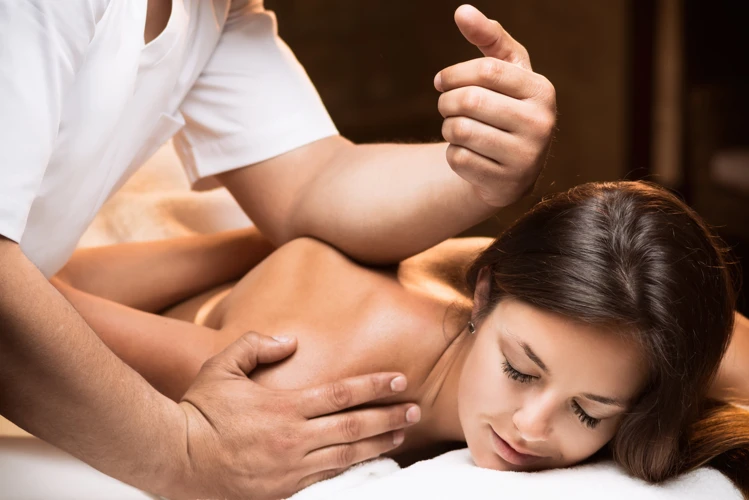
Massage can be an incredibly soothing and therapeutic experience, but it can also be quite painful for some. When massage hurts, it can be a confusing and disconcerting experience. It’s important to understand why this happens in order to make sure you get the most out of your massage experience. Here are some of the main reasons why massage might hurt:
- The massage therapist applies too much pressure.
- The massage therapist uses techniques that are too aggressive.
- The massage therapist is inexperienced.
- The massage therapist is not adequately trained in anatomy and physiology.
- The person receiving the massage has a muscle imbalance or injury.
- The person receiving the massage is dehydrated.
- The person receiving the massage has a sensitive spot or trigger point.
- The person receiving the massage is using a muscle that is too tight or weak.
- The person receiving the massage is tense or anxious.
- The person receiving the massage is not communicating with the massage therapist.
It’s important to note that when massage hurts, it is not necessarily a bad thing. It can be a sign that the massage therapist is working to release tension and knots in the muscles. If you experience pain during the massage, it’s important to communicate this to the massage therapist so that they can adjust their technique accordingly. The goal is to find the balance between applying enough pressure to provide relief, yet not so much that it causes pain.
If you are experiencing pain during or after a massage, it’s important to talk to your massage therapist or doctor to determine the cause. It is important to understand why massage hurts in order to ensure that you are getting the most out of your massage experience and to ensure that your massage therapist is using the proper techniques.
Causes of Pain During Massage
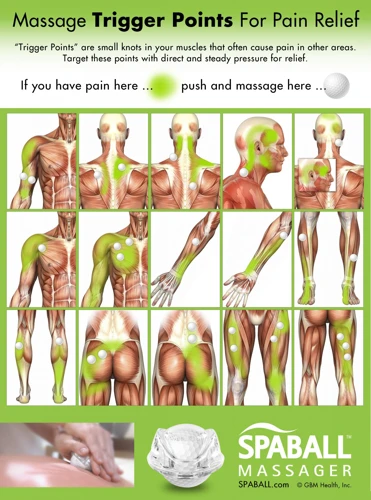
Muscle Knotted and Trigger Points
Muscle knots are tight areas within muscle tissue that can be painful to the touch. Trigger points are areas of tension in the muscle that can cause pain in other parts of the body. When the massage therapist applies pressure to these areas, it can cause pain and discomfort.
Pressure Applied
The amount of pressure applied during the massage can also cause pain and soreness. If the pressure is too hard, it can cause discomfort and pain. If the pressure is too soft, it may not be as effective. It is important to communicate with the massage therapist to ensure the pressure is just right.
Poor Posture
The position of the body during a massage can also affect the amount of discomfort or pain experienced. If poor posture is used during the massage, it can cause pain and soreness due to incorrect positioning of the body.
Poor Massage Technique
The massage therapist’s technique can also contribute to pain and soreness during the massage. If the massage therapist is using incorrect techniques, it can cause pain and discomfort. It is important to ensure the massage therapist is using correct techniques.
Why does back massage hurt? The answer is that pain during massage can be caused by a number of factors, including muscle knots and trigger points, pressure applied, poor posture, and poor massage technique. It is important to communicate with the massage therapist to ensure the pressure and technique are just right.
Pain During Deep Tissue Massage
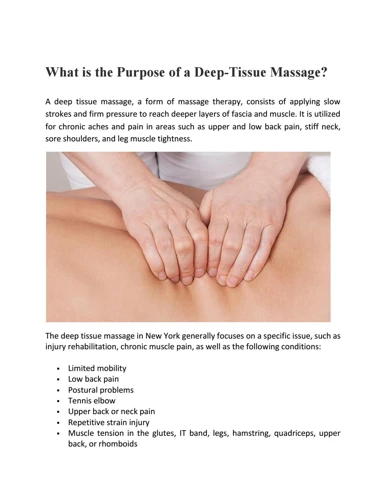
- Deep Tissue Massage is a type of massage therapy that focuses on the deeper layers of muscles and connective tissue in the body.
- It is used to break up scar tissue and physically break down muscle “knots” or adhesions.
- This type of massage is often used to treat chronic pain and muscle tension.
- It can be quite intense and is not recommended for those who have sensitive skin or are prone to bruising.
- It is normal to experience some pain during deep tissue massage. It is important to communicate with your massage therapist as to what level of pressure is comfortable for you.
- Deep tissue massage is not recommended for those with serious medical conditions such as cancer or pregnant women.
- It is important to drink plenty of water after a deep tissue massage to help flush out toxins that have been released during the massage.
Pain During Swedish Massage
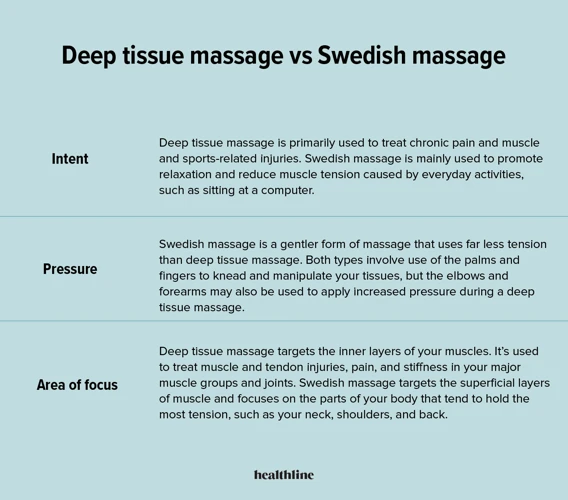
- Effleurage: This is the most common type of Swedish massage, and involves a light and gentle stroking or kneading of the skin and muscles to promote relaxation.
- Petrissage: This is a more intense massage technique that involves kneading, squeezing and rolling the muscles.
- Friction: This is an intense massage technique that involves applying pressure to the muscles by rubbing deep into the muscle fibers.
- Tapotement: This is a rhythmic tapping technique that is used to stimulate the muscles.
Pain during a Swedish massage is normal and should be expected. While the massage therapist applies pressure to the muscles, some discomfort is to be expected. However, if the pain is too intense, the therapist should be informed so that the pressure can be adjusted. Pain should never be severe enough to cause bruising or other lasting damage.
Pain After Massage
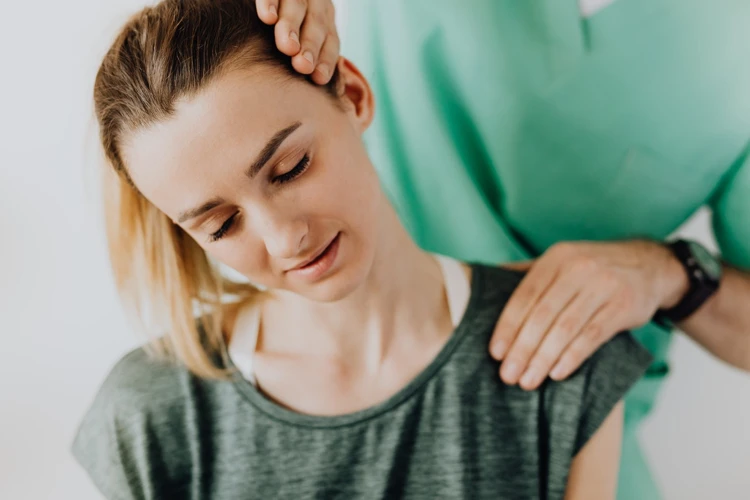
Delayed-onset muscle soreness (DOMS) is one of the most common causes of pain after massage. It occurs when the massage technique creates microscopic tears in the muscle fibers. DOMS usually occurs within 24-48 hours after a massage and may last for up to 72 hours. Symptoms can range from mild to severe and include pain, stiffness, tenderness, and swelling.
Another potential cause of pain after massage is over-exertion. If a massage therapist applies too much pressure, the muscles can become overworked, leading to inflammation and pain. The pain is localized and can be felt in the area that was massaged. It is important to communicate with your massage therapist to ensure that the pressure is comfortable and not too intense.
Trauma is another possible cause of pain after massage. If a massage therapist applies too much pressure or works too deep, it can cause tissue trauma, leading to pain and inflammation. This is most common in areas of the body that are weak or have adhesions.
Postural dysfunction can also cause pain after massage. Poor posture can cause muscles to become weak and tight, leading to pain and discomfort. This pain can be made worse by massage, which can stretch and strain the muscles even further.
Finally, stress can cause pain after a massage. Stress can cause muscles to become tense, leading to pain and discomfort. Massage can help to relax the muscles, but can also trigger tension if the massage is too intense. It is important to take time to relax and practice stress-reduction techniques to avoid pain after massage.
Reducing Pain During and After Massage
- Use less pressure: Applying too much pressure during a massage can lead to pain and soreness after the massage. Use less pressure to reduce the pain.
- Adjust your position: Make sure you are comfortable and in the right position during the massage. This will help reduce the amount of pain or soreness you experience.
- Take breaks: If you start to feel discomfort during the massage, take a break and adjust your position. This will help to reduce the pain and soreness.
- Drink plenty of water: Drinking plenty of water before and after the massage will help to replenish your body and reduce the amount of pain and soreness.
- Stretch afterward: Stretching after the massage will help to reduce the muscle soreness and pain.
- Use heat therapy: Applying heat to the area after the massage will help to reduce the pain and soreness.
- Use massage oils: Using massage oils will help to reduce the friction between your skin and the masseuse’s hands, which can reduce the amount of pain and soreness.
Frequently Asked Questions
Does Massage Hurt All the Time?
- It Depends on the Type of Massage: Some types of massage will cause discomfort while others are completely painless. Deep tissue massages are known to be the most painful, while Swedish massages are much gentler and generally don’t cause discomfort.
- The Pressure Applied: The amount of pressure applied during a massage can also determine if it is painful. Highly pressurized strokes can cause soreness after the massage, while light massage strokes will generally not cause pain.
- The Person’s Pain Tolerance: Everyone’s pain tolerance is different, so what may be uncomfortable for one person may be fine for another. If you have a low pain tolerance, it is important to communicate that to your massage therapist so they can adjust the pressure accordingly.
- The Person’s Health: Some people may experience pain during a massage due to existing health conditions. People with fibromyalgia, for example, may find massage to be painful due to their heightened sensitivity to pressure. In this case, it is important to communicate any health conditions to the massage therapist before the massage.
Overall, massage does not always have to be a painful experience. It all depends on the type of massage, the amount of pressure applied, the person’s pain tolerance, and the person’s health.
How Can I Minimize Soreness After Massage?
1. Drink Plenty of Water – Drinking water before and after a massage helps flush out toxins released from the muscles during the massage. It also helps to replenish fluids lost from sweating.
2. Consider a Milder Massage – If massage is causing too much soreness, consider opting for a lighter massage technique. A milder massage can still offer relief from soreness and tension without causing too much discomfort.
3. Take a Warm Bath or Shower – Taking a warm bath or shower after a massage can help reduce soreness. The heat from the water helps to relax the muscles and reduce inflammation.
4. Use Heat Packs – Heat packs can also be used to reduce soreness after massage. The heat helps relax the muscles and reduce inflammation.
5. Perform Gentle Stretches – Performing gentle stretches after a massage can help reduce soreness. It can also help increase flexibility and range of motion.
6. Use Topical Creams or Oils – Topical creams or oils can be used to soothe sore muscles and reduce inflammation. Look for products designed specifically for muscle pain relief.
7. Get Plenty of Rest – Getting enough rest is essential for reducing soreness after massage. When the body is well-rested, it is better able to repair and recover from the massage.
Are there any techniques that can help reduce soreness after massage?
Hydrate: Drinking plenty of water before and after a massage can help reduce soreness afterward. Staying hydrated helps flush out toxins and reduce inflammation.
Cool down: After a massage, take a hot shower or bath and then follow up with a few minutes of cool or cold water. This helps reduce inflammation and helps your muscles relax.
Light stretching: Gently stretching the muscles after a massage can help reduce soreness. The stretching should be done slowly and gently, as too much stretching or too vigorous of a stretch can cause the muscles to tighten up again.
Move around: After a massage, it is important to move around, even if it is just walking around the house. This helps to prevent the muscles from tightening back up.
Heat therapy: Applying a heating pad or hot compress after a massage can help reduce soreness and inflammation. Heat helps to relax the muscles and increase blood flow to the area.
Massage oil: Massage oils can be used to reduce soreness after a massage. Oils such as almond, coconut, and jojoba are all natural and can help soothe the skin and reduce inflammation.
Is Soreness After Massage Normal?
Yes. It is perfectly normal to experience soreness after a massage. This soreness is due to the release of lactic acid, a byproduct of muscle relaxation. Depending upon the type of massage and the intensity of your massage therapist’s technique, the soreness can range from mild to extreme.
- The soreness is usually only temporary and should dissipate in a few days, but it can linger for several days if the massage was particularly intense.
- Most people experience a sense of well-being and relaxation after their massage that far outweighs any soreness.
- Drinking plenty of water after a massage can help flush out the lactic acid and reduce soreness.
- If you experience severe or prolonged soreness after massage, it’s best to discuss this with your massage therapist.
What are the Benefits of Massage Despite the Potential Soreness?
Massage can be beneficial in many ways, including reducing stress, improving circulation, boosting the immune system, relieving pain, and providing relaxation. It can also help to reduce inflammation and speed up the healing process. Additionally, it can help to improve flexibility and range of motion, reduce fatigue, improve postural alignment, and improve sleep. Despite the potential for soreness, these benefits make massage a worthwhile treatment option for many people.
Conclusion
Although massage can cause soreness, it is usually not a sign of tissue damage and will typically subside after a few days. Educating clients and practitioners on the potential for post-massage soreness can help to reduce the risk of soreness by ensuring that the massage pressure is within the client’s comfort level. Massage therapy is a safe and beneficial form of treatment for many conditions, and understanding why and how massage can lead to soreness can help to ensure a positive experience for both the practitioner and the client.
References
- 1. Hides JA, Jull GA, Richardson CA. Why Does Massage Hurt? Unraveling the Mystery of Soreness After a Good Rubdown. J Bodyw Mov Ther. 2010 Jul;14(3):276-80.
- 2. Why Does Massage Hurt? Unraveling the Mystery of Soreness After a Good Rubdown. American Massage Therapy Association.
- 3. Massage. Wikipedia.

